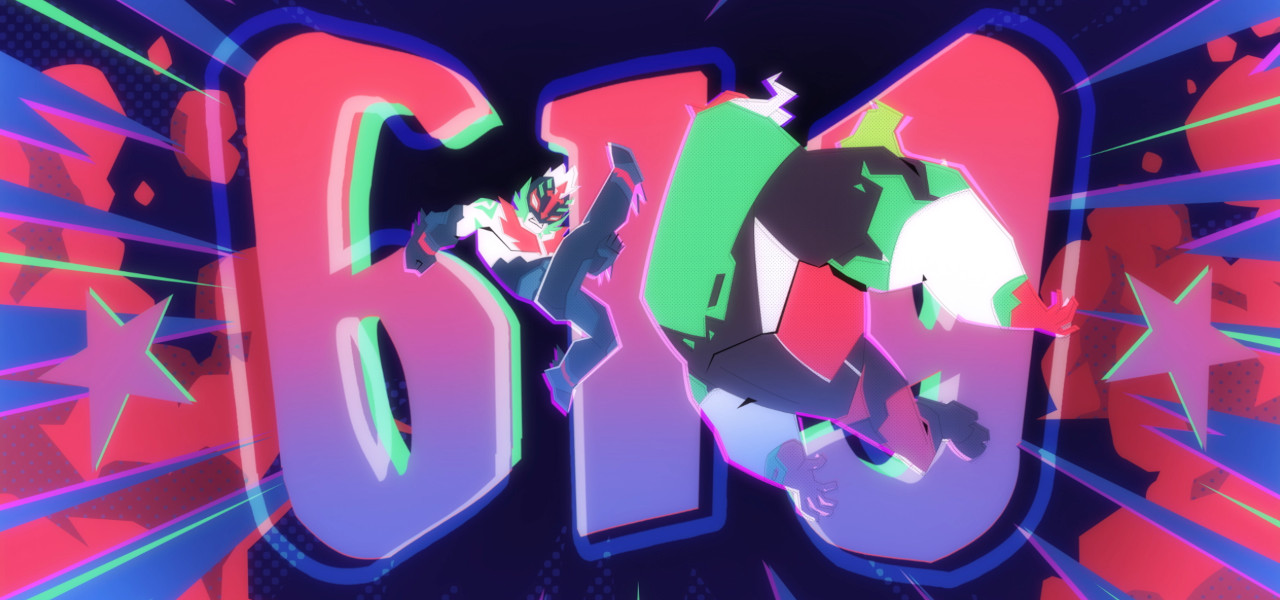
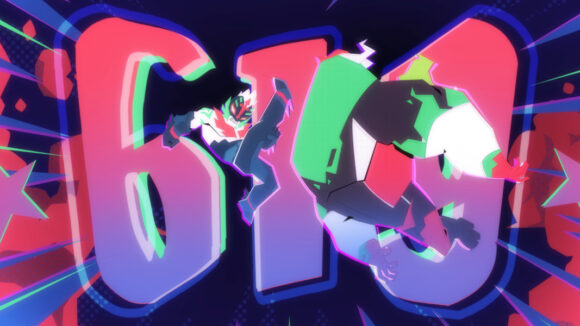
Los Hermanos Calavera On Animating Wrestling’s Greatest Masked Luchador In ‘Rey Mysterio Vs. The Darkness’
Cartoon Network’s Rey Mysterio vs. The Darkness is a highly stylized action-adventure series starring Rey Mysterio, the greatest masked luchador (Mexican wrestler) of all time.
In the show, eight-year-old Rey Mysterio superfan Oscar is accidentally imbued with superpowers and joins his hero in the fight against evil supernatural beings led by the malevolent fighter Uroboros.
The series debuted across much of Latin America on HBO Max and Cartoon Network earlier this month, and a U.S. release is planned for sometime in 2024.
Rey Mysterio vs. The Darkness was animated by the Mexican studio ¡Viva Calavera!, and it’s hard to imagine a more appropriate setup. The studio is led by three anonymous artists known as Los Hermanos Calavera (The Skull Brothers), who wear lucha libre masks everywhere they go. No, really, check out their Instagram.
We recently caught up with the trio and asked them about building the world of Rey Mysterio vs. The Darkness, bringing real-life wrestling moves into animation, and the rules to animating their childhood hero.
Cartoon Brew: How did Rey Mysterio vs. The Darkness start? Where did the idea come from and how did everyone get involved?
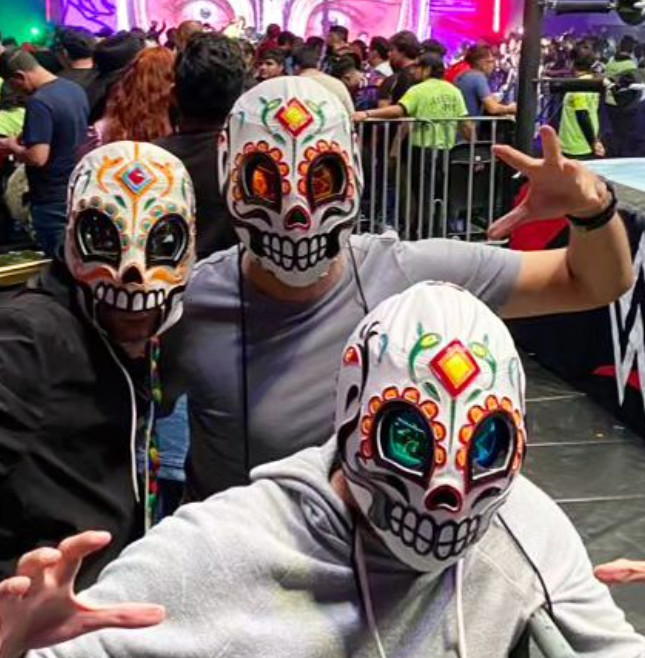
Los Hermanos Calavera: The origin of this series was actually a kind of coincidence. The three of us have been wrestling fans since we were kids, and of course, that meant we were fans of Rey Mysterio. We grew up watching him, and we saw him arrive on tv in the U.S. For us, he was fascinating for two reasons. One was the way he fought. It was so acrobatic and explosive, and above all, he was much smaller than his rivals. The other was that even though we didn’t know all the reasons why, as kids, it was so important for us to see someone like that on tv who was of Mexican origin. It was incredible to see a masked luchador doing spectacular things on the other side of the border and making a difference.
As adults, the idea of doing something in animation with wrestling was always attractive to us. We wanted to do something epic, huge, and full of spectacular things with lots of Mexican flavor. What better vehicle to do that than wrestling?
From Rey’s side, he had always wanted to do something in animation. He’d done small roles in the past but never a project of his own. He told us that there had been pitches to him, but none of them properly paid enough tribute to lucha libre. After his family, there is nothing Rey loves more than wrestling, so he wanted to do something that showed that admiration.
The final coincidence came from Cartoon Network Mexico, which was looking for projects that had a distinct local flavor but also the potential to reach a global audience. They saw that in our show.
There must have been tremendous pressure to get the Rey character right. Can you talk about the visual development process and any rules you may have had when creating the animated version of Rey?
From the beginning of development, one of the main rules was that Rey Mysterio in the show would be Rey Mysterio from real life. He already has so many characteristics that make a hero interesting. He is noble, he is an underdog, and he genuinely cares about others. We started out thinking about how we could take those virtues and create something new. We wanted to emphasize the underdog story, so we added this child protagonist to the story, a small novice who is clumsy in everything he does and follows Rey around. In the first episode, we also show how Rey’s size will be a key factor. He fights this giant, imposing character that is actually inspired by a famous photo of Rey Mysterio with the Great Kali.
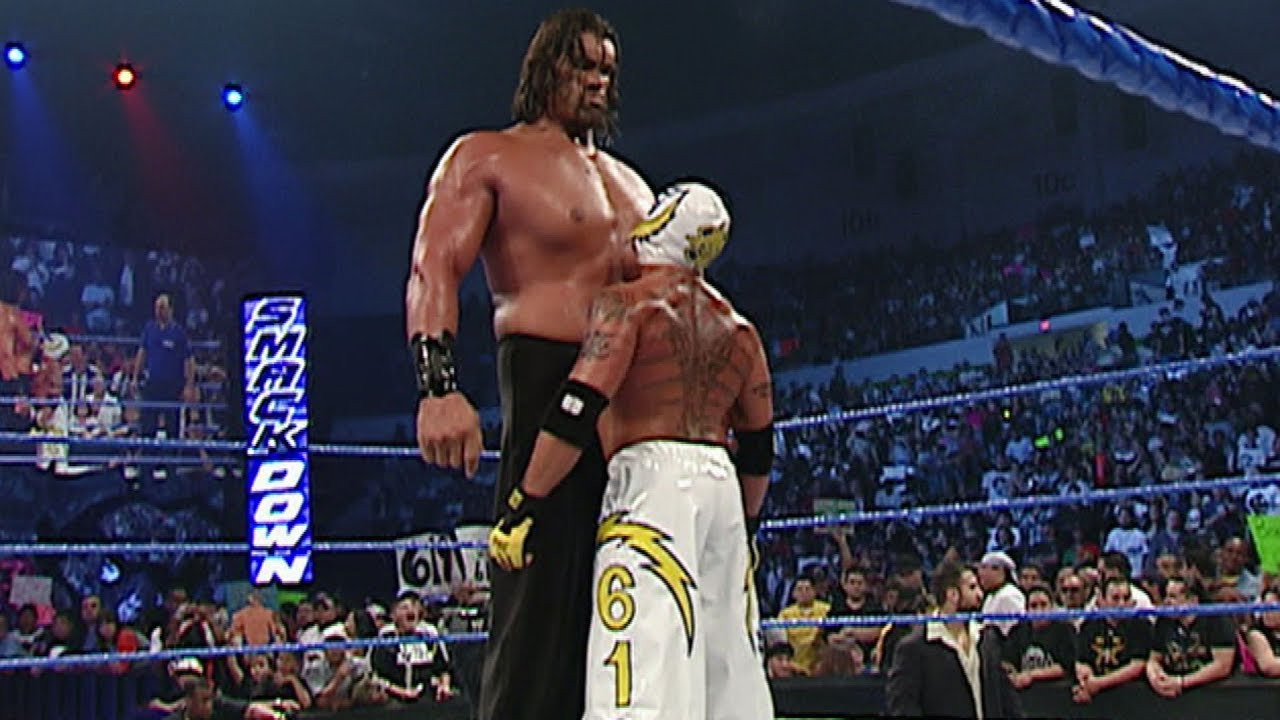
The show takes place in two distinct settings: our world, which is bright and vibrant, and the world of superpowers, where everything is dark neon-lit.
There was a huge emphasis on color. On the one hand, Mexico is known for its colorfulness, and on the other, we wanted to make a distinction between the two works of Rey as a luchador and Rey with superpowers. We also made that distinction with the lighting. In the arena, when Rey has his superpowers, everything is neon, but when he is fighting in the ring, we use the arena lights and lights from people’s cell phones.
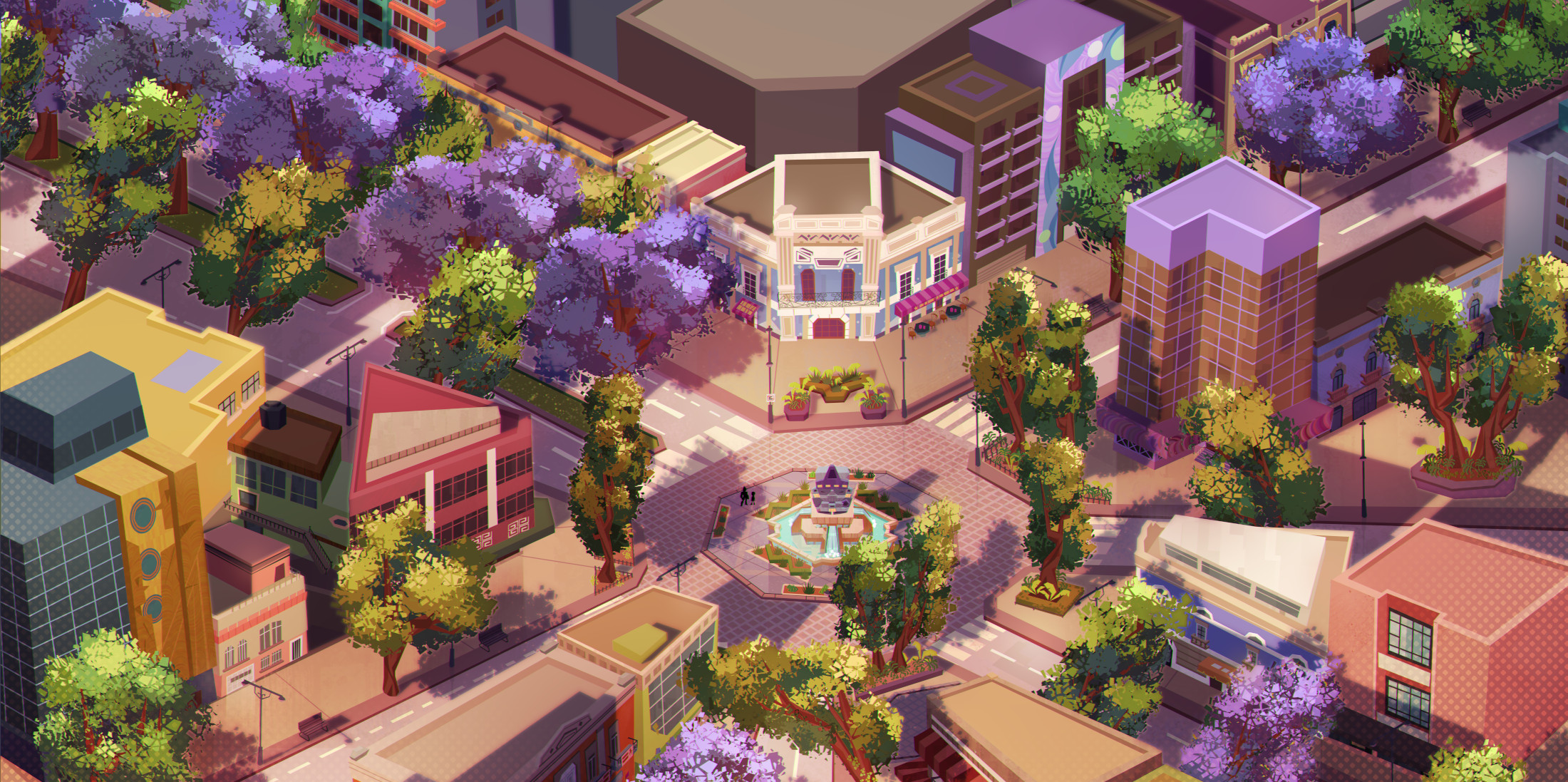
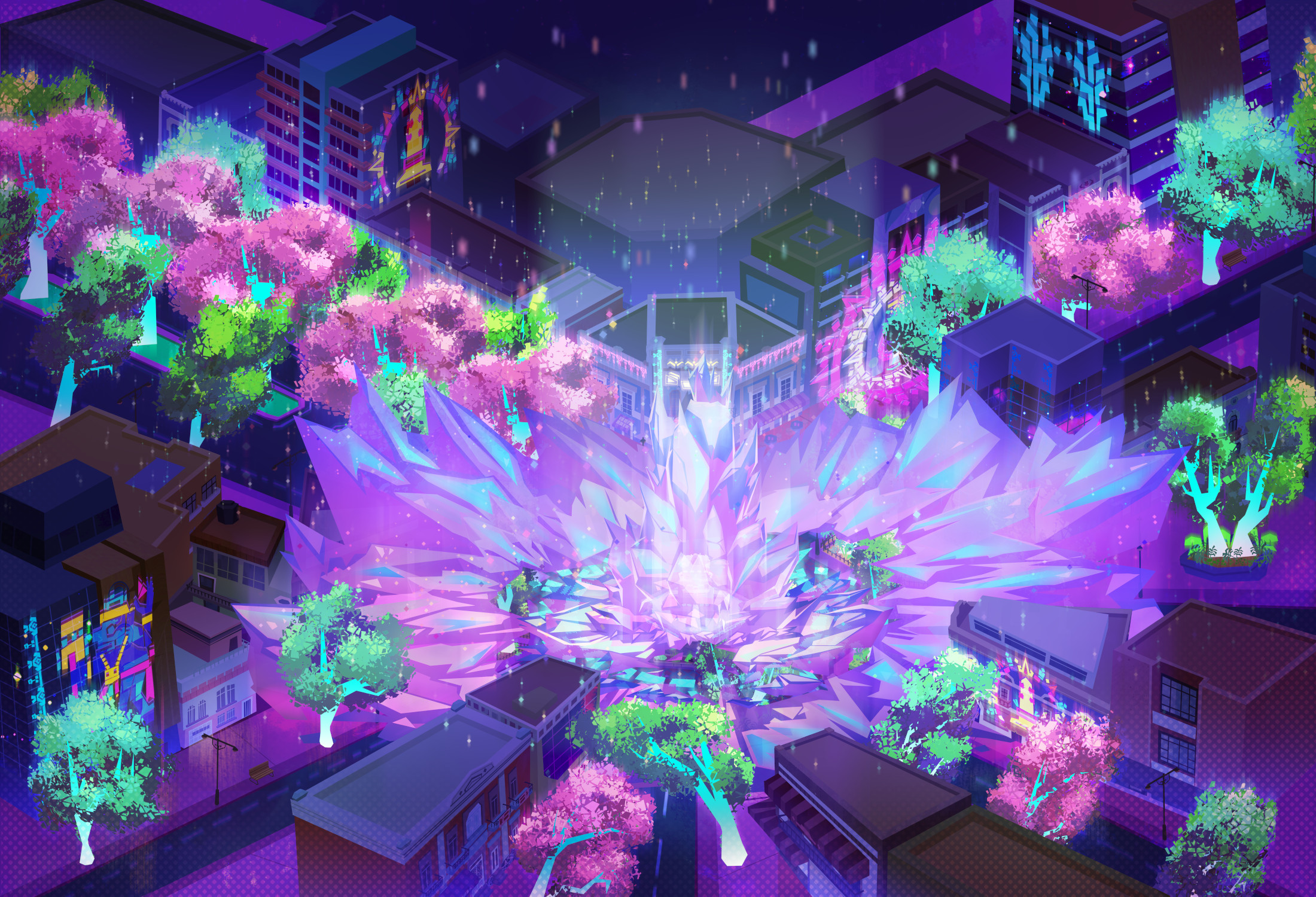
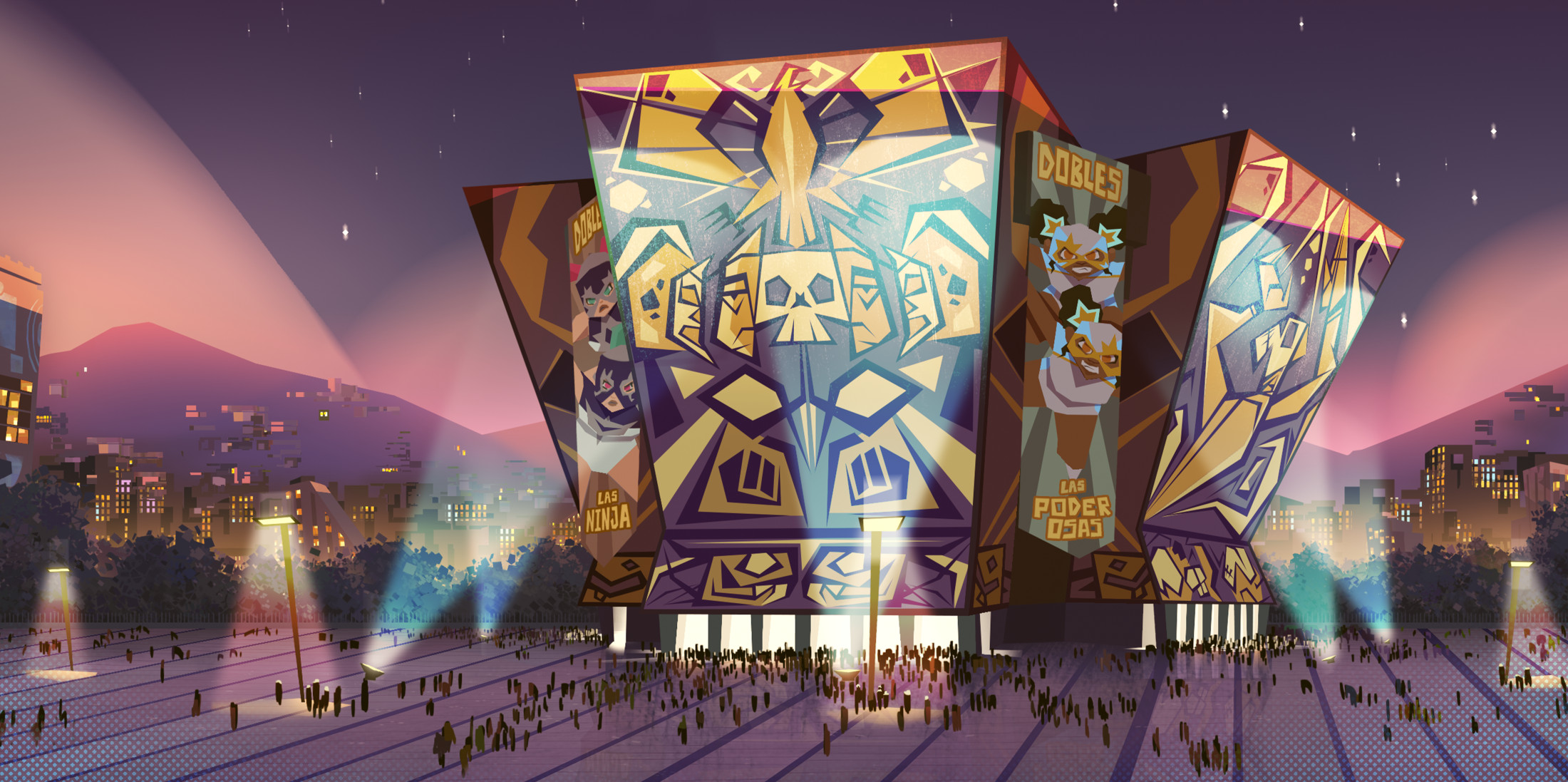
The show’s aesthetic borrows heavily from anime but still looks distinctly Mexican in its colors, backgrounds, and characters. Can you talk about the influences that defined the look of the show?
The aesthetic influences created a triangle for us. In one corner, we drew from Mexico and the world of lucha libre. In another, we drew from the world of Japanese animation, which all of us grew up watching. And in the third corner, we acknowledged that this was going to be a Cartoon Network show, and we wanted to include the visual language of some of our favorite Cartoon Network shows. So, those three points were the ones that defined our aesthetic decisions. Then, we had to balance those factors. With our original character designs, we tried too hard to fit into our idea of a Cartoon Network show, and we weren’t really satisfied. Fortunately, the network wasn’t either, and they asked us to rework them. So, the three of us went back and decided to do what we wanted to do and not something we’d seen on tv before, and that’s what worked best.
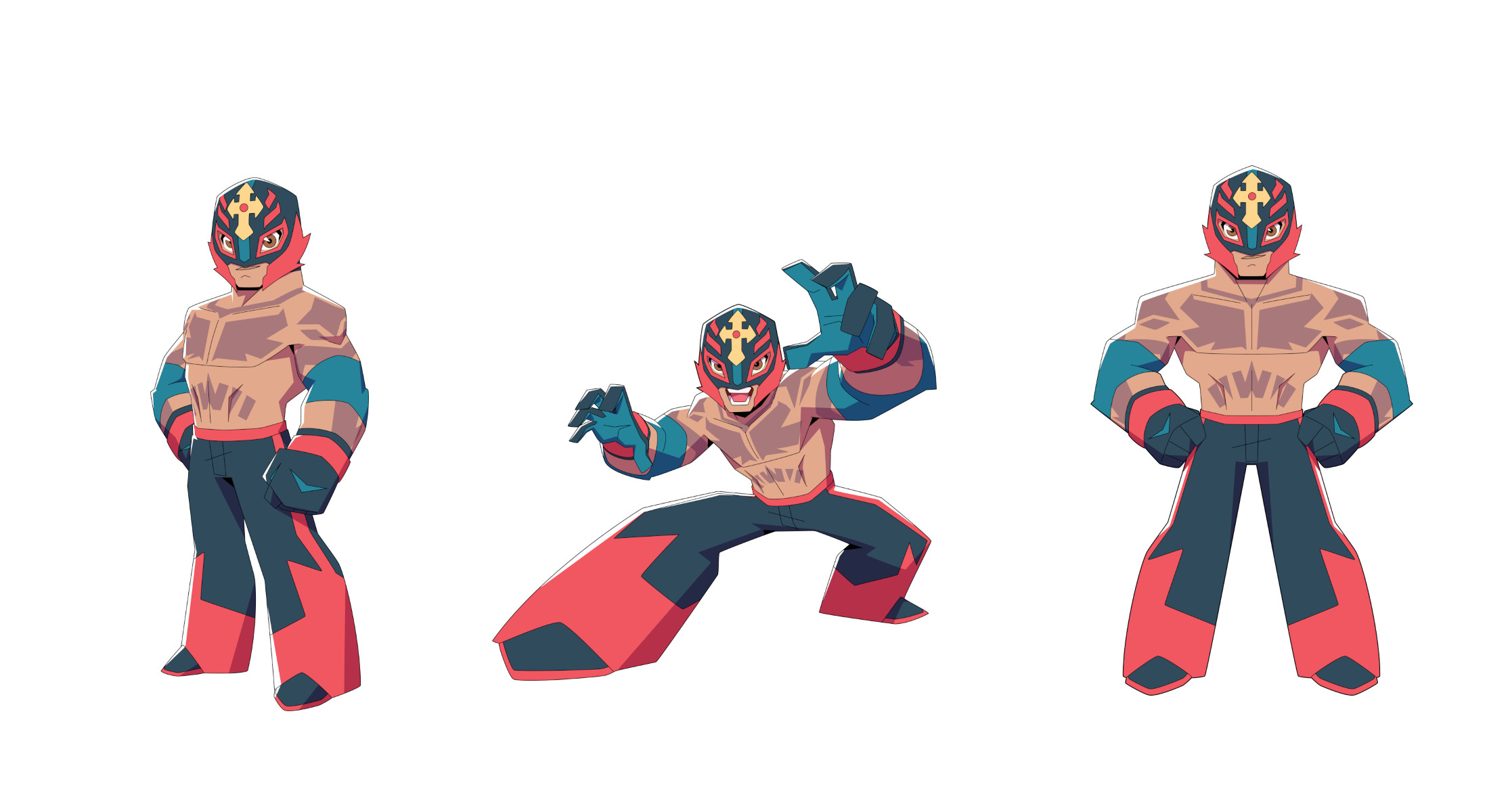
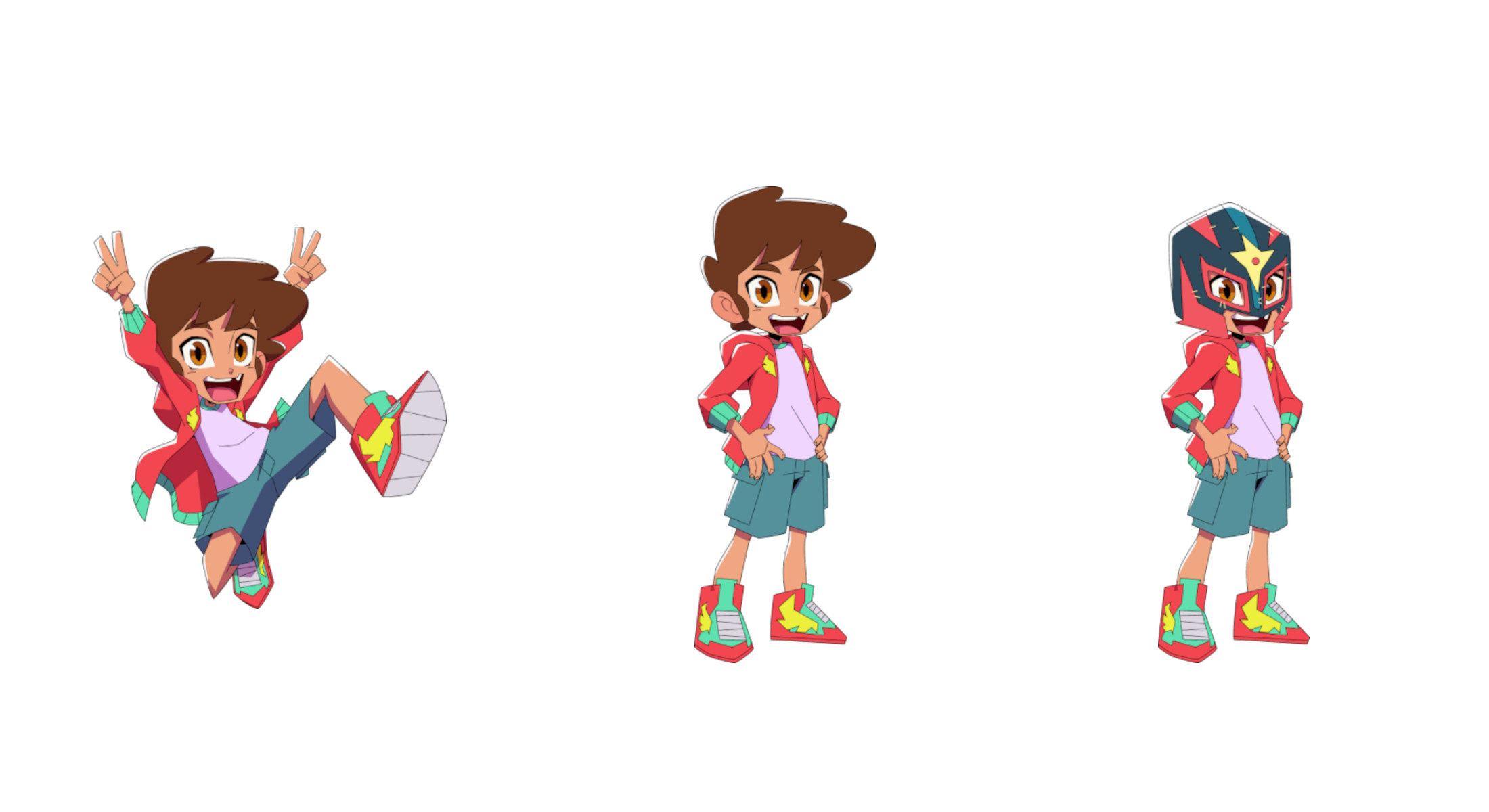
One thing that fans love about Rey is his constantly changing and evolving look. Will the way Rey looks in the show change over time?
Constantly changing colors and styles is one of the innovations that Rey brought to the world of wrestling. Traditionally, in lucha libre, your mask was your mask, and it never changed. After Rey, other wrestlers started modifying their masks, so we wanted to respect that in the show. Early on, we thought about having Rey change his look regularly, but we later realized if we were more deliberate in when the changes were made, it would create an opportunity to use those changes metaphorically. I can’t say more without spoiling things, but I will say that logic helped inform how we presented things on the screen. That also means that while the episodes can be watched independently and out of order, there is something to be gained in watching them chronologically.
Most wrestlers have a set of signature moves they’re known for using, but perhaps none could do more than Rey. Will fans of his in-ring career see moves like the 619, hurricanrana, Eddie Guerrero’s Frog Splash, or the springboard senton?
Including his characteristic moves was another way that we wanted to respect Rey and his career. The 619, in particular, is something we talked about a lot. For instance, we had to come up with ways for him to use the 619 without ropes because he is not always fighting in the ring. We also had to decide what it would look like in the world of superpowers. It’s been a lot of fun coming up with ways to represent these moves in another world. We were influenced heavily by Hong Kong cinema, which takes traditional martial arts moves and makes them extraordinary.
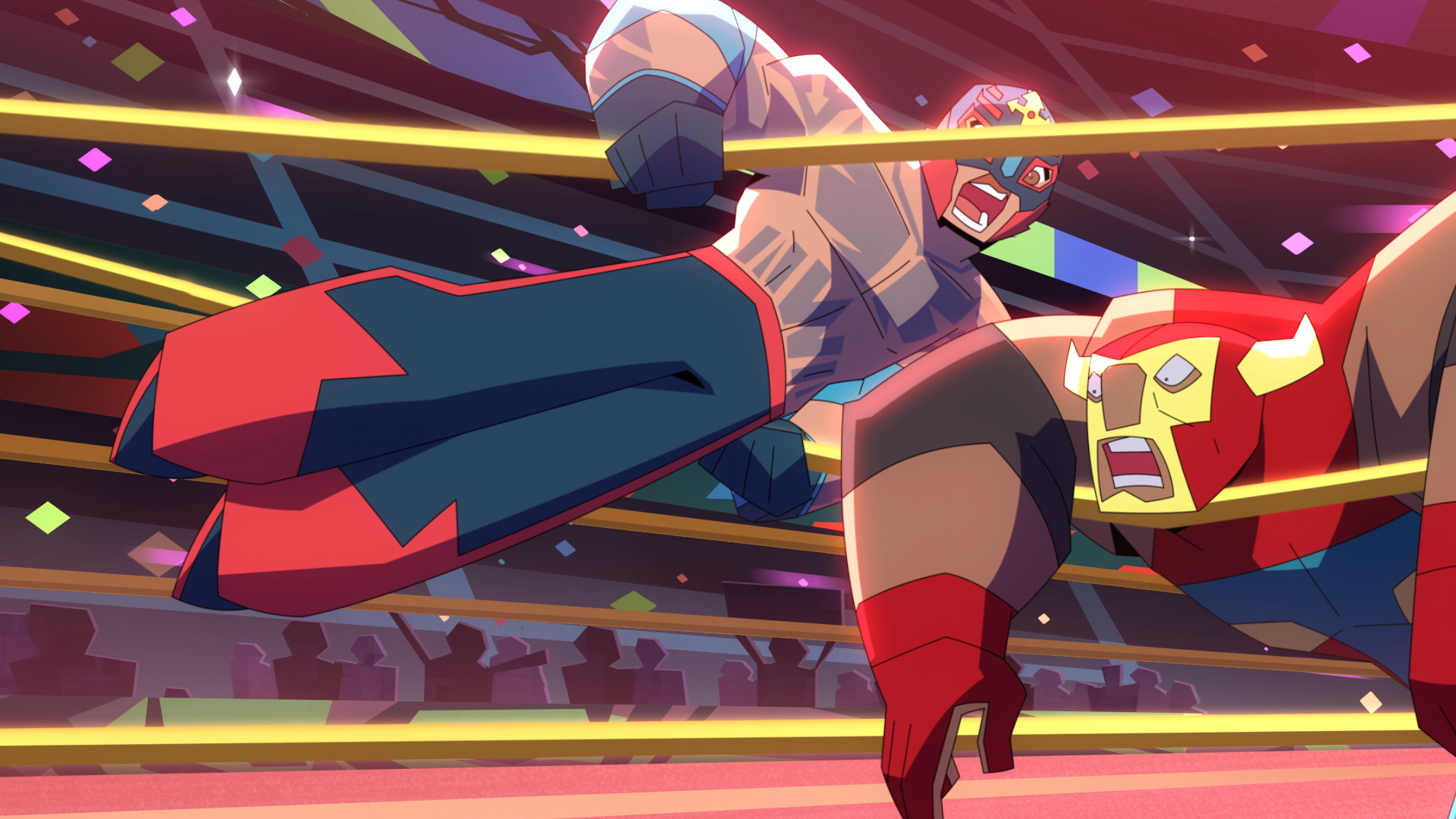
Rey has been wrestling for more than 30 years and has had some of the most legendary feuds and friendships during that time. Will anyone from his past show up in the show?
The series isn’t biographical, so we’re not trying to document the legacy of Rey, but we are using his history for references and to find places to anchor our narrative. His allies and rivals are an element of that. Anyone who is a fan of Rey Mysterio’s wrestling will recognize some of those references. Maybe not specific wrestlers, but references to the rivals and allies. Again, I can’t say too much because I don’t want to spoil anything, but Rey is not the only real-life fighter whose mask, name, and voice appear in the series.

.png)